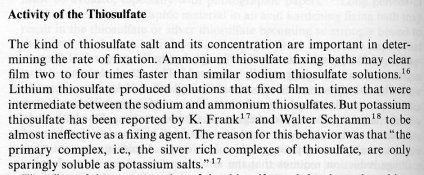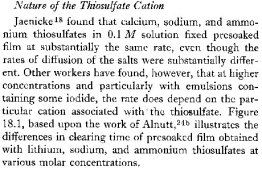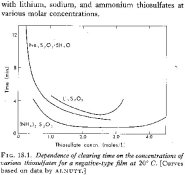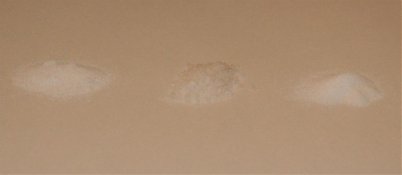Now on to your second paragraph. Indeed Potassium Alum is used in fixes and it slows down fixation and causes silver retention. This is why hardening fixes began using ammonium salts to take into account the synergy between thiosulfate and ammonium ion. In effect, you can balance out the effect of potassium but only to some extent. Elimination of the potassium will allow even faster fix rates and better fixation.
As for the use of borax in fixers, they are used in many alkaline fixers as a buffer. If the level of potassium were to be too high, it would negate the effect of having an alkaline fixer entirely and make it as slow as an acidic fix of much the same formulation. Washing would probably be slowed as well.
As far as having references here, yes I do. I have hundreds of textbooks on photographic emulsion making and processing, books on theory and books on system design. So, when I wrote that note giving references, I had 3 textbooks open next to me to those pages reading exactly what was said.
And, I have done lab experiments, some of them with Haist standing next to me either guiding or observing, invovling these processing principles.
And, since we have no spec for potassium in tetraborate or boric acid in the standard you published, we don't really know how it would work in some instances.
PE
As for the use of borax in fixers, they are used in many alkaline fixers as a buffer. If the level of potassium were to be too high, it would negate the effect of having an alkaline fixer entirely and make it as slow as an acidic fix of much the same formulation. Washing would probably be slowed as well.
As far as having references here, yes I do. I have hundreds of textbooks on photographic emulsion making and processing, books on theory and books on system design. So, when I wrote that note giving references, I had 3 textbooks open next to me to those pages reading exactly what was said.
And, I have done lab experiments, some of them with Haist standing next to me either guiding or observing, invovling these processing principles.
And, since we have no spec for potassium in tetraborate or boric acid in the standard you published, we don't really know how it would work in some instances.
PE







